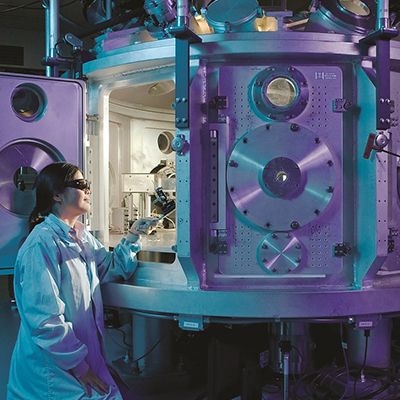
Definition
Microclimate conditions tests
The microclimatic conditions in the work environment have a significant impact on the health and well-being of employees. Maintaining a comfortable thermal environment in rooms consists in maintaining an appropriate level of heat exchange between the environment and people. Efforts should be made to reduce the thermal load and discomfort caused by it.
The thermal comfort associated with the microclimate conditions determines the satisfaction of employees (or other surveyed group of people) with the thermal conditions prevailing in the rooms. Thermal conditions significantly influence metabolic changes.
Conducting comprehensive measurements of the work environment enables the creation of an appropriate microclimate. For this, the heat accumulation should be determined by the formula:
S = M(1-η) + E0+P + C + R + E
- M – metabolic heat production
- – mobility
- E0 – heat loss through breathing
- P, C, R – amount of heat exchanged with the environment by conduction, convection, and radiation
- E – amount of heat exchanged by sweat evaporation
What is the impact of microclimatic conditions on human health?
If the heat balance is maintained (S = 0), the amount of heat generated in the employee’s body is completely transferred to the environment, which means that work can take place in pleasant conditions. If S ≠ 0, then unfavorable ailments may occur.
The unfavorable microclimate may cause problems with the circulatory system, the central nervous system and be associated with disturbances in the water and electrolyte balance.
In addition, psycho-physiological disorders may occur, such as: inability to concentrate, deterioration of dexterity, malaise, exhaustion, and severe fatigue.

The microclimate in the work environment is influenced by environmental factors, such as:
Relative air humidity
Relative humidity is related to the perceived temperature and the process of sweating. Too much humidity makes it difficult for sweat to wick away from the skin. Too little humidity causes drying of the mucous membranes, headaches, and throat aches.
Air temperature
Air temperature is a key aspect in creation of microclimate. The temperature must be adjusted accordingly so that it is possible to obtain thermal comfort.
Air velocity
The air velocity determines the perceived temperature and the sound pressure distribution in the building.
The asymmetry of the temperature distribution in the room
It is a differential of the vertical temperature distribution in the room. It determines the temperature difference felt at the level of the feet and head, it should not exceed 10 degrees C.

Equipment
ENVILAB-EKO measuring equipment.
Our work environment laboratory conducts measurements of microclimate conditions with the use of specialized measuring devices. ENVILAB-EKO will precisely measure the parameters of hot and moderate microclimate. For this purpose, we use the EHA MM101 microclimate meter, which allows us to conduct comprehensive microclimate measurements. It is equipped with the function of a microclimate calculator and an anemometer.
Our laboratory conducts tests throughout entirety of Poland.
Legal provisions
Standards and legal provisions specifying how the microclimate conditions tests are to be conducted:
Measurements of the microclimate in the work environment performed by the ENVILAB-EKO laboratory are conducted on the basis of the guidelines contained in the standards:
- PN-EN ISO 7726:2002 – Ergonomics of the thermal environment. Instruments for measuring physical quantities.
- PN-EN ISO 11079:2008 – Ergonomics of the thermal environment. Determination and interpretation of thermal stress resulting from exposure to a cold environment, considering the required thermal insulation of clothing (IREQ) and the impact of local cooling.
- PN-EN ISO 7243:2018-01 – Ergonomics of the thermal environment – Assessment of heat load using the WBGT index (temperature of a wet thermometer and a blackened sphere).
- PN-EN ISO 7730:2006 – Ergonomics of the thermal environment. Analytical determination and interpretation of thermal comfort with the use of PMV and PPD indexes and local thermal comfort criteria.

